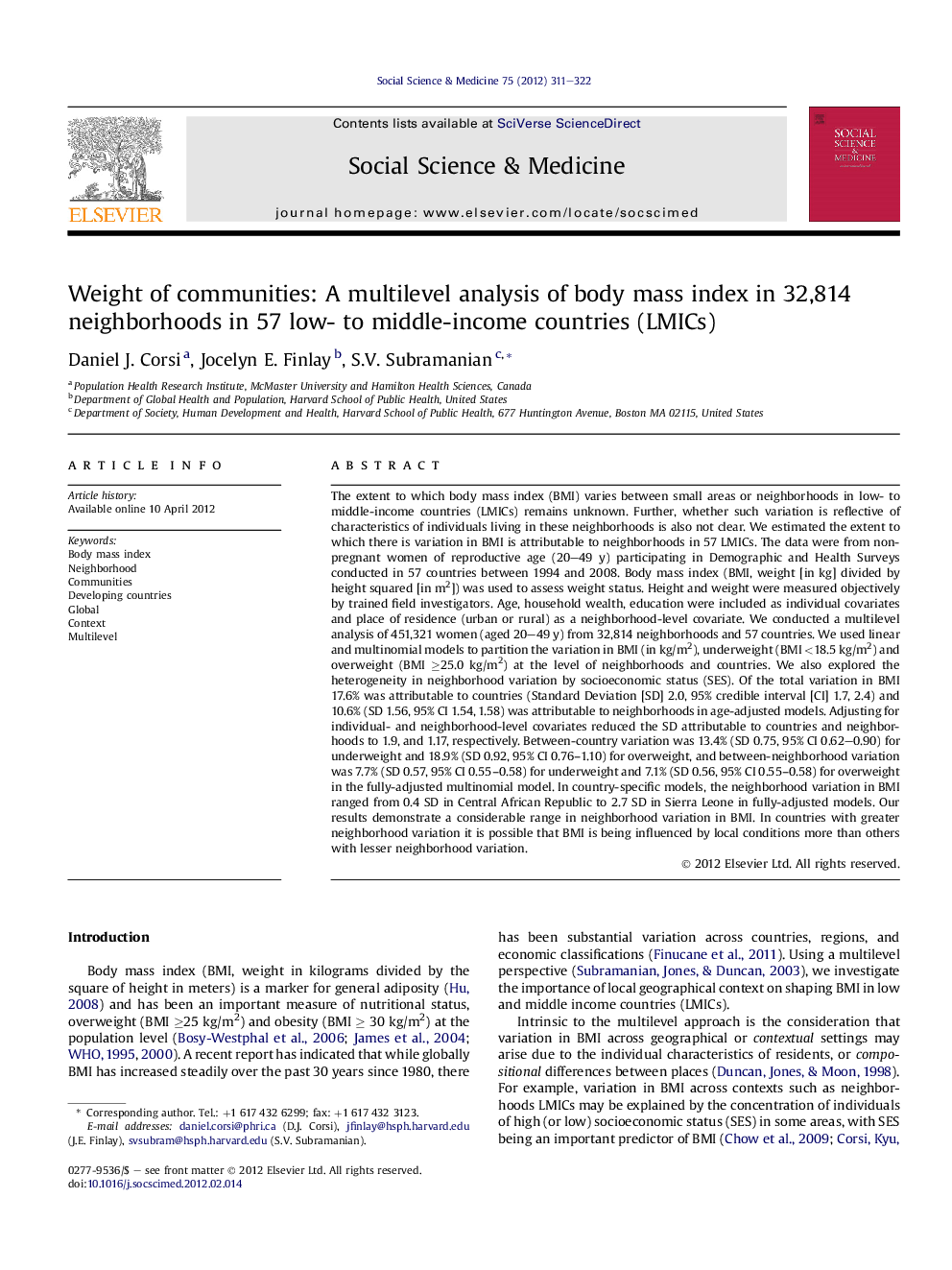| کد مقاله | کد نشریه | سال انتشار | مقاله انگلیسی | نسخه تمام متن |
|---|---|---|---|---|
| 952544 | 927521 | 2012 | 12 صفحه PDF | دانلود رایگان |

The extent to which body mass index (BMI) varies between small areas or neighborhoods in low- to middle-income countries (LMICs) remains unknown. Further, whether such variation is reflective of characteristics of individuals living in these neighborhoods is also not clear. We estimated the extent to which there is variation in BMI is attributable to neighborhoods in 57 LMICs. The data were from non-pregnant women of reproductive age (20–49 y) participating in Demographic and Health Surveys conducted in 57 countries between 1994 and 2008. Body mass index (BMI, weight [in kg] divided by height squared [in m2]) was used to assess weight status. Height and weight were measured objectively by trained field investigators. Age, household wealth, education were included as individual covariates and place of residence (urban or rural) as a neighborhood-level covariate. We conducted a multilevel analysis of 451,321 women (aged 20–49 y) from 32,814 neighborhoods and 57 countries. We used linear and multinomial models to partition the variation in BMI (in kg/m2), underweight (BMI <18.5 kg/m2) and overweight (BMI ≥25.0 kg/m2) at the level of neighborhoods and countries. We also explored the heterogeneity in neighborhood variation by socioeconomic status (SES). Of the total variation in BMI 17.6% was attributable to countries (Standard Deviation [SD] 2.0, 95% credible interval [CI] 1.7, 2.4) and 10.6% (SD 1.56, 95% CI 1.54, 1.58) was attributable to neighborhoods in age-adjusted models. Adjusting for individual- and neighborhood-level covariates reduced the SD attributable to countries and neighborhoods to 1.9, and 1.17, respectively. Between-country variation was 13.4% (SD 0.75, 95% CI 0.62–0.90) for underweight and 18.9% (SD 0.92, 95% CI 0.76-1.10) for overweight, and between-neighborhood variation was 7.7% (SD 0.57, 95% CI 0.55-0.58) for underweight and 7.1% (SD 0.56, 95% CI 0.55-0.58) for overweight in the fully-adjusted multinomial model. In country-specific models, the neighborhood variation in BMI ranged from 0.4 SD in Central African Republic to 2.7 SD in Sierra Leone in fully-adjusted models. Our results demonstrate a considerable range in neighborhood variation in BMI. In countries with greater neighborhood variation it is possible that BMI is being influenced by local conditions more than others with lesser neighborhood variation.
► The extent to which body mass index (BMI) varies by neighborhood independent of the characteristics of individuals living in these neighborhoods remains unknown in Low and Middle Income Countries (LMICs).
► Individual characteristics accounted for about 50% of the observed between-neighborhood differences in BMI.
► The amount of variation in BMI that was attributable to neighborhoods independent of individual factors differed substantially between countries, providing an indication of the relative importance of local residential context in shaping nutritional status among women in a diverse sample of countries.
Journal: Social Science & Medicine - Volume 75, Issue 2, July 2012, Pages 311–322